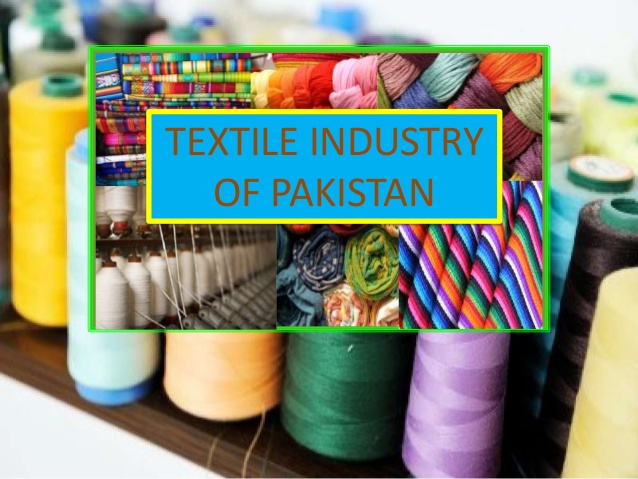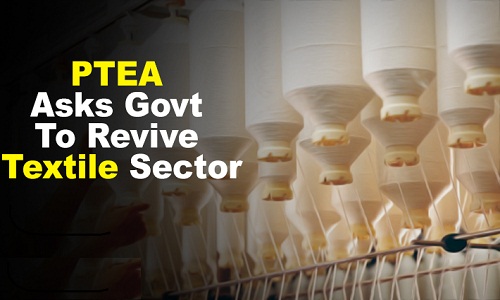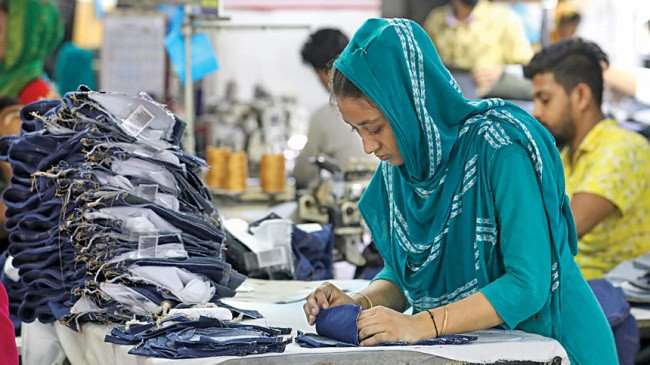FW
Darlie Koshy, DG and CEO, ATDC & IAM has been honoured ‘Outstanding Contribution to Education Award 2015’ at the recent World Education Congress (WEC), Mumbai. This award is for knowledge, skill development and leadership for the upliftment of society.
A Doctorate from IIT Delhi in Management and an MBA from CUSAT, Koshy’s ground-breaking contribution to fashion and design education over the past couple of decades has been well-acknowledged by the academia, textile-apparel industry and policy makers. He has many feathers up his cap. Koshy was named twice as one of the 50 educational leaders shaping Indian higher education by ‘Education World’, (in 2006 and 2008). He has been trained at FIT New York in Fashion Management, and is a founding faculty member of NIFT. He was also selected and trained by CBI, Rotterdam, under the ‘Match-maker’ programme on Europe, besides receiving the UNDP Research grant for an International marketing research project on Indian Apparel in the overseas markets.
He has authored a book, ‘Indian Design Edge’, focusing on Indian design. The book traces the evolution of Indian design in the first decade of new millennium and the 21st century, exploring its strong linkages to India’s design heritage, while strategising the need for India to become a ‘creative manufacturer’ to the world.
Human Solutions and the Canadian Apparel Research and Innovation Center Vestechpro, jointly will soon launch a major anthropometric serial measurement survey that will represent many demographic populations in the US and Canada.
There will be 3D body scanners to capture up-to-date body measurements in various postures. This data will eventually be prepared for what the automotive and apparel industry needs. The aim to be inclusive and will include a systematic survey of children aged 6 and above.
‘Size North America’ as the survey is called, is the most extensive serial measurement survey project on the North American continent. The project aims to develop current and representative dimensions for the automotive and apparel industry. People change in body size through the years, and body measurements, proportions and demographic structure have changed quite a bit through decades. This has proved to be a challenge for the apparel industry, which is based on the anthropometric data and standard size tables available at present. Body measurements of children particularly, have been poorly monitored. Size North America aims to capture and document all the changes.
Juveniles too are a focus of this serial measurement survey. Also, a special survey for the age group between 6 and 17 years was never conducted till now in North America. Michael van Genabith, President of Human Solutions of North America, stated that the large-scale survey carried out will not only help them determine the changes in the body measurements and proportions of the North American population, but this data will provide them with relevant information on safety, handling and comfort for product development in the automotive industry.
In a step towards implementing the Economic Community of West African States (ECOWAS) Common External Tariff (CET), the federal government recently delisted textile materials and other items from its import prohibition.
Alhaji Abdullahi Dikko, the Comptroller-General of Nigeria Customs Service (NCS), made this known in Lagos, last month. He said that the textile materials, furniture and other delisted items could now be imported. However, this was subject to the payment of a 35 per cent duty as agreed to by all 16-member countries of the sub-regional body. He added that there was also a provision for an import Adjustment Tax. Dikko was speaking at the launch of the implementation of the CET.
Some adjustments for member countries had to be made with the CET though, said Dikko. There were 97 chapters with the 5,899 tariff headings, but every member country was entitled to three per cent adjustment. This would later translate into 177 tariff headings, which would in turn enable member countries to protect their local industries. The new policy comes into effect in June, as directed by the Federal Ministry of Finance.
A committee has already been set up by the ECOWAS Commission, to monitor the implementation. This would allow it to ensure that there’s adequate compliance so that the provisions are not abused.
Cotton growers in Pakistan are still waiting for the government to decide on the cotton intervention price for the current season. The delay is having a negative impact on them. The National Assembly Standing Committee on Textile Industry and the Ministry for National Food Security and Research had fixed the intervention price of cotton at Rs 3,000 per 40 kg for the financial year 2015-16. The Trading Corporation of Pakistan (TCP), in the second week of November, intervened in the domestic market and started procurement the commodity to stabilise cotton prices. Less than 1,00,000 bales were procured. However, the late decision was not beneficial for farmers and objections were raised after which, cotton procurement was suspended. However, the TCP is likely to be made bound to procure at least two million cotton bales for this year.
It is possible that the government will procure seed cotton instead of lint cotton on an experimental basis, as per the Indian model of cotton procurement. The cotton price may be fixed in between the import and export parity prices. Lint cotton is exported as well as imported by Pakistan and during this course of business activity a lot of revenue is being spent, which may be avoided through the import of long staple cotton, which is required for fine quality cotton in certain textile sectors.

In the wake of the Rana Plaza factory collapse in Bangladesh in April 2013, two major initiatives were launched by major apparel brands, the Accord on Fire and Building Safety in Bangladesh (the Accord) and the Alliance for Bangladesh Worker Safety (the Alliance), to establish mechanisms to prevent fire and safety hazards. A recent report by the Institute of Developing Economies, the largest industry in Bangladesh is ready-made garments (RMG), which comprises nearly 50 per cent of the nation’s economy.
Tragedies trigger safety measures

As there’s a high population density and paucity of land, garment factories are usually built one upon the other and in some cases, in former swamp areas. Thus, while many factory owners share the same building, structural weaknesses tend to be ignored. This was the backdrop of the Rana Plaza disaster, which had five workshops and 2,000 workers.
Rana Plaza was not the only incident to take place due to the fire and safety hazards. A fire in Tazreen Fashions killed 112 workers in November 2012 and in a response, the Ministry of Labour and Employment of Bangladesh, in a joint effort with the International Labor Organization (ILO), coordinated the adoption of National Tripartite Plan of Action on Fire Safety and Structural Integrity in the RMG sector in Bangladesh. This was signed by the government, employers and workers. The Plan was in place even before the Rana Plaza collapse. However, the international community kept questioning fashion brands’ responsibility in the collapse, though brands did not directly own the supplier factories. Media reports and calls for accountability made brands take action and the Accord was launched on May 15, 2013 and the Alliance on July 10, 2013.
The two plans, similarities and differences Both the Accord and the Alliance are based on the National Tripartite Plan and share the same goal of preventing fires and building safety hazards in Bangladesh. However, there are some marked differences between the two. The Accord has over 260 members and includes many top European companies. It is often referred to as a ‘European’ initiative. While, the Alliance consists of 26 North American brands and companies.
A legally binding agreement, the Accord is signed by trade unions and NGOs. Most signatories are from Europe, some from North America and Asia. Four global labour unions and six Bangladeshi labour unions are a part of the Accord, and four international NGOs act as witnesses. Signatory companies commit to the Accord’s activity and obligations for its full tenure. Each company commits to maintaining long-term sourcing relationships with its main suppliers, conditioned upon the supplier’s compliance with fire and building safety measures.

Pakistan's textile industry has lost its viability against regional competitors. Facing tough times the Pakistan Textile Exporters Association (PTEA) has sought government's intervention to tackle the situation. Production costs are at a comparative disadvantage in the country.
It’s tough times for industry

Sohail Pasha, Chairman Pakistan Textile Exporters Association, points out that due to unfriendly and inefficient socio-economic environment, the cost of doing business in Pakistan has soared tremendously. This is because of the constant rise in raw material prices and production inputs that in turn renders the country’s exports uncompetitive in international market. Competing countries have an advantage and are making in-roads in traditional markets, pushing Pakistan textiles out.In Punjab particularly, the textile industry is in a crisis since long and is struggling to survive. High production costs coupled with energy constraints have put a stop to the industrial wheel and disturbed the competitive edge of textile exports. Regional rivals have grown their exports with government’s support, increasing their market share in global textile trade. From 2008 to 2013, Bangladesh achieved 160 per cent growth in textile exports, while China achieved 97 per cent and India, 94 per cent. However, Pakistan’s growth remained at 22 per cent. The statistics show Pakistan’s global textile trade had dropped from 2.20 per cent to 1.80 per cent.
Energy shortage is another major bug bear. Besides, the cost of doing business too has risen and there’s a burden of incidental taxes, provincial cess, inefficiencies in the system and withholding tax regime has made it more difficult for the industry.
Need for government intervention
PTEA chairman feels that the government needs to provide a level-playing field to double existing share in global textile exports. He cited an example such as incentives under technology upgradation fund scheme, focus market scheme, focus product scheme and export goods scheme that are available to Indian textile exporters.
PTEA also urged the government to look into this seriously and step up to save the forex earning sector from disaster. Two main factors as stated, energy crisis and high cost of doing business are keeping back this mainstay of the national economy from optimum growth. Thus, uninterrupted supply of gas and electricity at regionally affordable rates, liquidation of all pending refunds, removal of all innovative taxes and restoration of zero rating regime for textile export chain should be ensured by the government. This would help restore the competitiveness of the industry.
B2B online platform XSTOK was launched to assist small dealers and garment manufacturers from across the country, who found it difficult to source fabrics at reasonable rates in a cluttered unorganized market. The e-auction platform founded by Sanjiv Khandelwal and Mihir Shah was launched in January 2015. Since its launch the firm has managed to complete 18 auctions with a transaction value of Rs 1 crore within two weeks. The suppliers for the auction included textile manufacturers such as Garden Vareli, Bombay Dyeing, denim maker Arvind, and towel manufacturer Welspun group.
The ecommerce start-up helps in creating a network of buyers and sellers and also matches supply and demand. XSTOK runs the model by charging buyers an initial registration fee and suppliers a transaction fee of 3-5 percent on each successful transaction. The average price bracket of auctioned goods varies from Rs 1.5 lakh to Rs 10 lakh, depending on the consignment. The firm already boasts of 2,500 buyers and 100 suppliers on its platform.
www.xstok.com
With the Global Investors Meet (GIM) around the corner in September, the Tamil Nadu government has decided to unveil its new investor-friendly textile policy in the next few days. Before the final draft is made, the Handlooms and Textiles Department is also studying the textile policies of states like Maharashtra, Gujarat and Madhya Pradesh to evaluate the financial and legal aspects.
The ministers concerned along with representatives of the textile sector met recently and sought the drafting of a new textile policy in accordance with recent trends in the sector. Sources say the revised policy may be announced before the commencement of the Global Investor Meet scheduled on September 9. As part of the GIM, 12 focus sectors have been identified, one of which is the textiles and apparels sector.
Minister for Handlooms and Textiles S Gokula Indira also said that the government plans to introduce suitable tax concessions and the single window system for the approval of the investment proposals. Tamil Nadu being one of the leading states in the textile industry has the country’s largest spinning industry accounting for almost 80 per cent of the total installed capacity in India. The state also contributes 40 per cent of the total yarn production in the country. There are 2,614 hand processing units and 985 power processing units in Tamil Nadu and the textile industry accounts for 17 per cent of the total invested capital in all the industries.
www.tn.gov.in
At the recently concluded Capsule New York, the men's denim collections showcased two distinct design directions for Spring ’16 lines. Some brands’ focus was on perfecting lightweight raw denim, while others tried out new silhouettes and washes. Designers were more creative and combined slim-cut denims with a dropped crotch. Annex is one brand that offered this silhouette. The brand Mostly Heard Rarely Seen offered the ultimate street wear in its exaggerated version of the style with shorts and jeans with a double-drop crotch. It also had a varied range with a combination of fabrics, hand-painted splatter effects, and patchwork.
Some brands looked into avante garde trends and paid attention to fabrics (specifically light-weight denims). Designer Jongsoo Lee of the brand Document, which has an eco-friendly goal, said that he focuses on thin denims to make the items feel more natural. Many brands tried out new wash techniques. Big John’s Sales and Marketing Representative Kiyo Kakemizu mentioned that raw denim’s popularity was dipping since most denim aficionados already had their pairs. Thus, Big John was focused on hand-whiskering effects, and ozone-wash for bleaching and various finishing treatments.
James Long too is experimenting with washes, treatments and design details, while keeping a relatively traditional cut and fit to jeans.
Australia, the world's largest wool producer and exporter will host the Wool for Future Generations: the 85th IWTO Congress in Sydney in April 2016. The event is co-hosted by the Federation of Australian Wool Organisations (FAWO).
Sydney, being the birthplace of Australian wool industry, makes an excellent destination to hold this event. A must-attend event for the global wool industry, the IWTO Congress connects wool growers, spinners, weavers, garment manufacturers, designers and retailers. Wool industry experts would discuss the role of wool for future generation, at this three-day event, which provides a strong platform for business networking, discussion and exchange between members on issues of interest to the industry.
The topics covered at the Congress would include market intelligence, consumer trends, health and wellness, environment, trade, retail trends and education, for the coming generations. Also, trade exhibitions and displays will be an integral part of the Congress.
Local and international speakers will cover relevant topics in the wool industry. Networking opportunities abound, with international textile manufacturers and fashion retailers participating. Wool is viewed as a fibre for future generations and the aim of such an event is to help the young generation take this forward with innovation, new technologies, creativity, training and our the experts’ to ensure a sustainable future for all.












